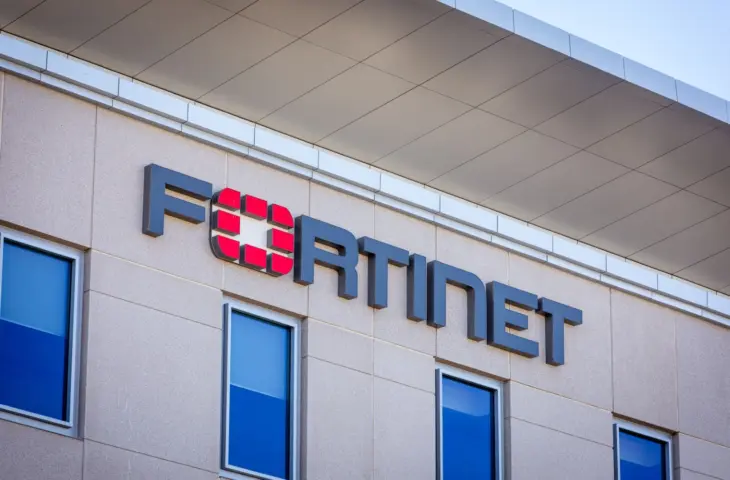AI is central to Fortinet, and this was highlighted at Security Day 2025. The security specialist believes that AI helps you better understand the tools you need to comply with NIS2.
Op een zonovergoten terras van Docks in Brussel verwelkomt Fortinet Regional Director BeLux Filip Savat “meer dan 500 aanwezigen”. Bedrijven krijgen volgens hem te maken met slimmere aanvallen, strengere wetgeving en een drastisch tekort aan security-experts. Fortinet wil daar met één platform een antwoord op bieden.
AI Becomes the Backbone
Fortinet infuses its strategy with AI through three new pillars: AI Protect, AI Assist, and Secure AI. This was not only explained on stage but also via an AI-generated PDF that somewhat strangely formed the guideline during our conversation.
“For me, AI is simply a database with intelligence. The better your database, the better your intelligence,” emphasizes Patrick Commers, Fortinet Cyber Security Evangelist. Through FortiGuard Labs, billions of events flow in daily; this massive data feed allows Fortinet to recognize new threats in near-real-time.
AI Assist gives analysts a generative copilot. In a demo, Commers shows how an analyst “performs seven actions in six minutes”, which previously took several hours. Secure AI offers protection through more controls on that data and better cloud security. “Which files are you uploading? We can monitor that and, if necessary, stop access,” Savat adds. The result is a platform that both detects threats and protects itself against AI misuse.
Time is Running out for NIS2
Besides technology, there’s urgency in the air. Europe’s “NIS2 directive affects approximately 2,500 Belgian organizations according to the CCB. ‘Being compliant by October 2026? If you haven’t started yet, you’ll never make it,’ warns Commers. He points to three pain points: documenting processes, designing network segmentation, and testing crisis scenarios”.
You have to assume you’ll be hacked; only then do you prepare the right playbooks.
Patrick Commers, Fortinet Cyber Security Evangelist
“If organizations had taken their responsibility from the beginning, such legislation wouldn’t have been necessary. Now they’re panicking because they can’t meet the basic requirements before the 2026 deadline,” says Commers. “Large organizations are further along in meeting these requirements due to more financial resources, but SMEs are going to struggle.”
Cybercrime Pays Off
“You simply have to assume you’ll be hacked; only then do you prepare the right playbooks,” states Commers. This mentality is necessary to apply the rules as quickly as possible. Without the right measures, NIS2 not only threatens hefty fines but also personal liability for management.
The numbers don’t lie. Cybercrime now represents a turnover of 9.5 trillion dollars, “the third largest global economy after the US and China” according to Check Point. According to DNS Belgium, 82 percent of cyber attacks are caused by human error, and 94 percent begin with opening a malicious link in an email. Healthcare remains the most popular target due to the high value of patient data. The European Commission is working on a plan to counter the growing number of cyber attacks on hospitals.
Inti De Ceuckelaire from Intigriti also thinks NIS2 is a good thing: “People can no longer practice ostrich security, burying their heads in the sand when it happens. Some companies are still conservative and wait until they get hacked. I compare it to a dangerous intersection where traffic lights are only installed after a fatal accident. It could have been avoided.”
Back from Never Being Gone
De Ceuckelaire came by to showcase his magical hacks. AI seems especially popular in the hacker community. “People who think there will be an AI hackbot ready tomorrow to hack us all… That’s not going to happen. What is becoming more and more popular are AI agents,” he explains. “That technology can set everything in motion faster. In the past, hackers needed hours to phish people via emails or chat, now it takes them no time to send messages to 500 people simultaneously.”
read also
Fortinet Sees AI as Support for NIS2
Additionally, people seem to have completely forgotten all basic vulnerabilities. “In terms of authorization, we’re going backwards significantly. It’s as if all the mistakes from the web of the 2000s are coming back. Employees upload Excel and XML files into AI tools without thinking about it. That’s dangerous.”
At the same time, he calls for more openness. “As companies, we are being tested 24/7 by an army of 150,000 hackers. What you do with it determines whether you win or lose,” he says. He advocates for a culture where employees can admit mistakes without fear, where ethical hackers are welcome, and where silence is seen as the real risk. “People forgive mistakes. But they don’t forgive if you say nothing.”
Conclusion
Fortinet is clear: AI is a fantastic tool for and against cybersecurity, many companies underestimate their NIS2 to-do list, and openness is paramount. The bar is set high, unfortunately not everyone is at the same imposed standard yet. That’s why, according to the company, businesses would do well to change course today and use AI as wind in their sails.
